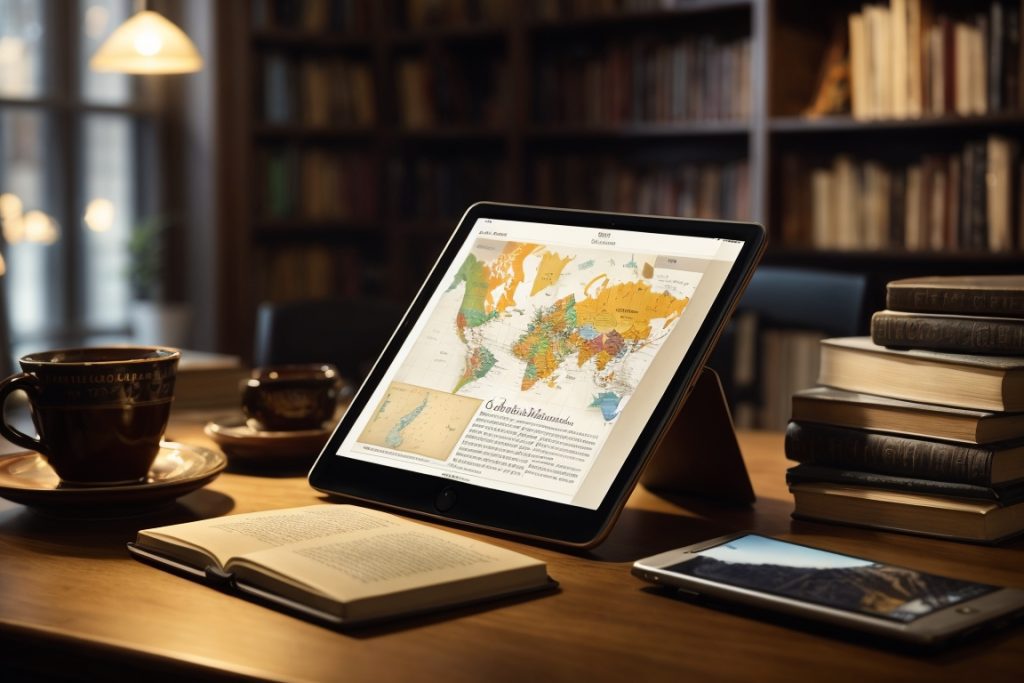
The Impact of Technology on Literary Publishing
The infusion of technology into literary publishing has been nothing short of transformative. It has not only changed how literature is produced and consumed but has also opened new avenues for creative expression and global connectivity.
Expanding the Reach of Literature Through Digital Formats
The digital revolution has greatly expanded literature’s reach:
- E-books and Audiobooks: The convenience of e-books and audiobooks has made literature more accessible than ever. E-readers and audiobook apps allow readers to carry entire libraries in their pockets, facilitating reading habits among people who may not have access to physical books.
- Affordability and Environmental Impact: Digital books often come at a lower price point than their physical counterparts and reduce the environmental impact associated with printing, shipping, and storage.
Social Media’s Role in Democratizing Literary Success
Social media platforms have democratized the marketing and success of literary works:
- Direct Author-Reader Engagement: Platforms like Twitter, Instagram, and Goodreads allow authors to interact with their readership directly, fostering a sense of community and loyalty.
- Viral Marketing and Book Trends: Social media can catapult books to popularity, with trends and viral content leading to increased sales and visibility.
Translation Technologies: Creating a Global Literary Community
Advanced translation technologies are erasing language barriers:
- Access to Diverse Literature: Improved translation tools have opened up readers to a world of literature from different cultures, enhancing cross-cultural understanding and appreciation.
- Machine Translation and Human Translators: While machine translation has advanced significantly, the nuanced work of human translators remains irreplaceable for capturing the subtleties of literary language.
AI in Literary Creation and Editing
Artificial Intelligence is redefining the creative process:
- Content Generation Tools: AI tools can assist in plot development, character creation, and even provide suggestions for improving narrative structure.
- Editing and Proofreading: AI-powered grammar and style checkers can significantly enhance the quality of writing, making the editing process more efficient.
The Integration of Traditional and Digital Publishing
A hybrid publishing model is emerging:
- Balancing Print and Digital: While e-books offer convenience, the tactile experience of print books continues to hold a special place for many readers.
- Print-on-Demand: Technologies like print-on-demand are bridging the gap between digital and traditional publishing, reducing waste and making it economically viable to print smaller runs of physical books.
Interactive and Multimedia Literature
Technology is enabling new forms of storytelling:
- Enhanced E-books: Some e-books now include interactive elements, such as embedded audio, video, and hyperlinks, providing a richer reading experience.
- Virtual and Augmented Reality: These technologies are beginning to be explored for immersive storytelling experiences, offering readers new ways to engage with narratives.
The technological revolution in literary publishing has led to a more inclusive, diverse, and interactive landscape. As we move forward, the interplay of traditional and digital forms, coupled with advancements in AI and immersive technologies, promises to further enrich the literary world. This evolution marks a new chapter in the way stories are told, shared, and enjoyed, underscoring the timeless importance of literature in our lives.